
Student Projects
VG100
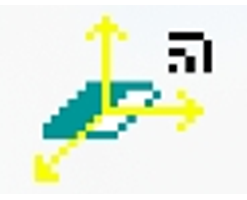
UWB-Based Bicycle-Following Carrier
Instructors: Dr. Mian Li, Dr. Irene Wei
Team Members: Ruiqi Niu, Yifan Li, Yanming Wang, Weixin Yu, Yihan Zhu
Project Video
Team Members
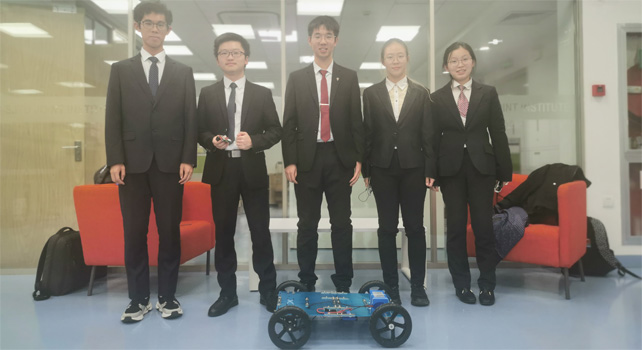
Team Members:
Ruiqi Niu, Yifan Li, Yanming Wang, Weixin Yu, Yihan Zhu
Instructors:
Dr. Mian Li, Dr. Irene Wei
Project Description
Problem
Recent years, bicycle is one of the most common means of transportation. However, it’s difficult and dangerous for people to ride bicycles with a handbag or suitcase in their hand. Therefore, they always choose to walk to carry the loads, which is more time-wasting and energy-wasting.
Concept Generation
Our project aims at making a system that can keep track of the user autonomously and precisely to reduce the danger caused by riding bicycles with heavy loads. The system consists of a speedy carrier platform and a wearable equipment to locate the user.
Design Description
A system consisting of a wearable UWB tag and a carrier platform with UWB tags is our final solution. The communication between the tags will enable the platform to measure the distance between the carrier platform and the user constantly and eventually to calculate the trajectory of the target to follow. The motors on the platform are powerful enough so that the platform will not lose track of a normal cyclist.
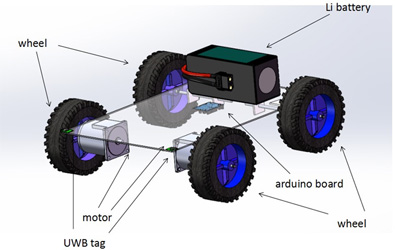
Fig. 1 The concept diagram
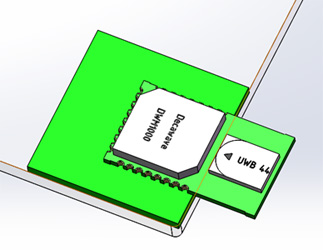
Fig. 2 The UWB tag
Modeling and Analysis
The way to realize our project is mainly divided into three parts. Firstly, to lay the foundation for further software processing, we assemble the platform and the wearable equipment. We make sure that the platform is solid enough and the motor is powerful enough. Secondly, the Arduino microprocessor analyzes the coordinate of the user in the established cartesian coordinate system based on the readings from two UWB modules on the platform. Then, the Arduino microprocessor computes the trajectory of the user based on the car’s motion state and the comparative location analyzed in the coordinate system. Finally, the Arduino microprocessor controls the platform to go strictly along the trajectory computed above.
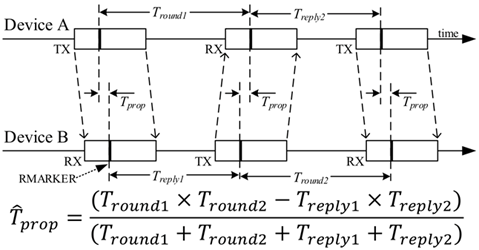
Fig. 3 The ranging algorithm
Validation
The data in table 1 show the accuracy of UWB to measure the distance between tags in different ways under different conditions, which also accounts for our final choice to apply DS-TWR. The accuracy of this method meets the need of our project.
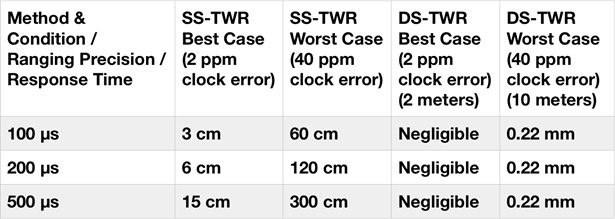
Table 1: The accuracy of UWB
The data in table 1 show the accuracy of UWB to measure the distance between tags in different ways under different conditions, which also accounts for our final choice to apply DS-TWR. The accuracy of this method meets the need of our project.
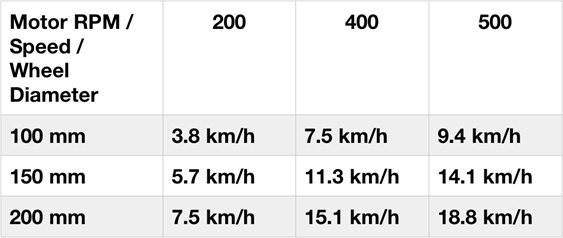
Table 2: The maximum speed
Conclusion
Our project reduces the potential danger of carrying heavy loads when one rides bicycles by designing such an automatic following carrier based on UWB technology. In fact, the carrier can serve more purposes under many other circumstances. It is helpful to patients by carrying infusion apparatuses; it can also help share the burden of people who are unable to take too many objects at a time. This system is quite versatile to some extent and can greatly facilitate people’s everyday life.
Acknowledgement
Dr. Mian Li and Dr. Irene Wei from the UM-SJTU Joint Institute;
Teaching Assistants [Hanyang Feng, Fubo Qi, Sheng Qiao, Xiaoxuan Wang] for VG100 at UM-SJTU Joint Institute.
Teaching Assistants [Hanyang Feng, Fubo Qi, Sheng Qiao, Xiaoxuan Wang] for VG100 at UM-SJTU Joint Institute.
More project information, please contact: [richard_niu@sjtu.edu.cn]
Reference
Reference: Decawave Ltd., “dw1000_user_manual_v2.15.pdf” Page. 231
UM-SJTU JOINT INSTITUTE